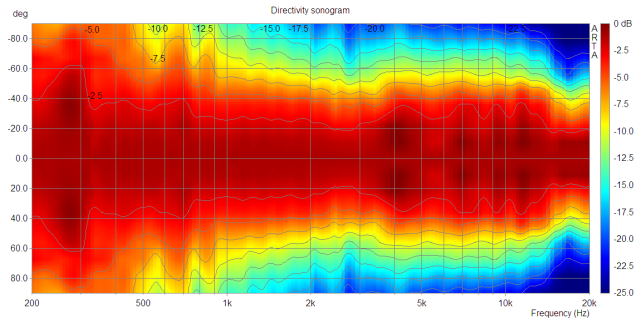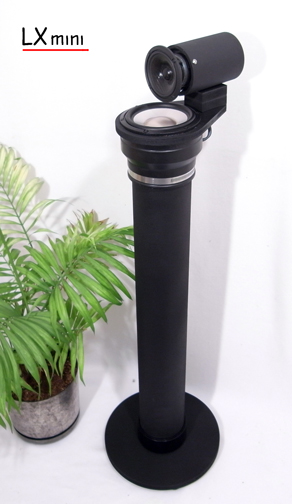So are you saying the waveguides in the new Revel Performa Be series (less than a year) aren't up to the job?
Or are they solving the problem differently?
They are from the House of Toole and Olive, so it's not like they're ignorant....
I'd say their methodology is quite similar, but the scale and the drivers used are different. Both adopt a very smooth geometry such that the off-axis response closely mimics the on-axis/listening axis and matches the drivers that are low-passed to cross with it. It is just that the OS/SEOS waveguides are designed for much large CtC spacing and depth to load compression drivers for higher SPL rather than direct-radiating domes and the curvature is adjusted for that. But the methodology appears similar.
I suppose my comment was with reference to large low-diffraction smooth waveguides for high-SPL use and directivity control to lower frequencies, rather than with dome tweeters, which have become increasingly common.
What seems genuinely different and no less legitimate in terms of directivity control is the M2/LSR approach (the Imaging Control waveguide), which embraces clever smearing of diffraction rather than really eliminating it. I've spoken to Charles Sprinkle about it
here and here is his reply:
The Image Control waveguide on the M2s actually had defined coverage and smooth response in the oblique planes. Because the waveguide needs an expanding cross sectional area, the "knuckles" were used on the horizontal and vertical planes to move the upper pattern control frequency higher, but the obliques could not. as a result, the upper pattern control frequency in the oblique planes was significantly lower. this could potentially affect perceived timbre. The solution, of course, would be to have a compression driver with a 1" exit, at the expense of higher distortion from the non-linearity of air at higher SPL.
A well designed diffraction waveguide should not impart sonic coloration if the diffraction feature is blended to smear the reflection in time. This actually reduces the reflection back down the throat and associated frequency response (and impulse response) anomalies.
I'm not aware of any controlled experiments with subjective analysis on this. From my own experience, I have not been able to hear artifacts from blended diffraction features so long as the impulse response and frequency response are good.
In a reply to another poster, he had said:
The Image Control waveguide was designed to provide individual control of vertical and horizontal coverage and lower pattern control frequency. It was also constant directivity. The Kali waveguide has an elliptical waveguide with a sound power that drops at about 1dB per octave. This creates less of an inflection in the soundpower than a constant directivity waveguide and in our opinion sounds more neutral. By controlling the spacing of the transducers and vertical pattern, we were able to optimize system integration.
The woofer has a soundpower that is esentially the same as the on-axis response at low frequencies. It falls off at higher frequencies as the system becomes more directional. If the HF is constant directivity, this puts an inflection in the soundpower at the crossover point. Both HF and LF could have a smooth response, but there is still an inflection. This can affect perceived timbre. By having a controlled directivity waveguide with a small soundpower slope, we can minimixe the inflection in the sound power and in-room response.
My own take is that directivity index should be smooth, the polars should be smooth, but the exact pattern - wide/narrow, narrowing/constant, whether coverage suddenly dies away or smoothly fades away in SPL outside of the intended radiation pattern - depends on the application as well as the FR anomalies that can be tolerated.





